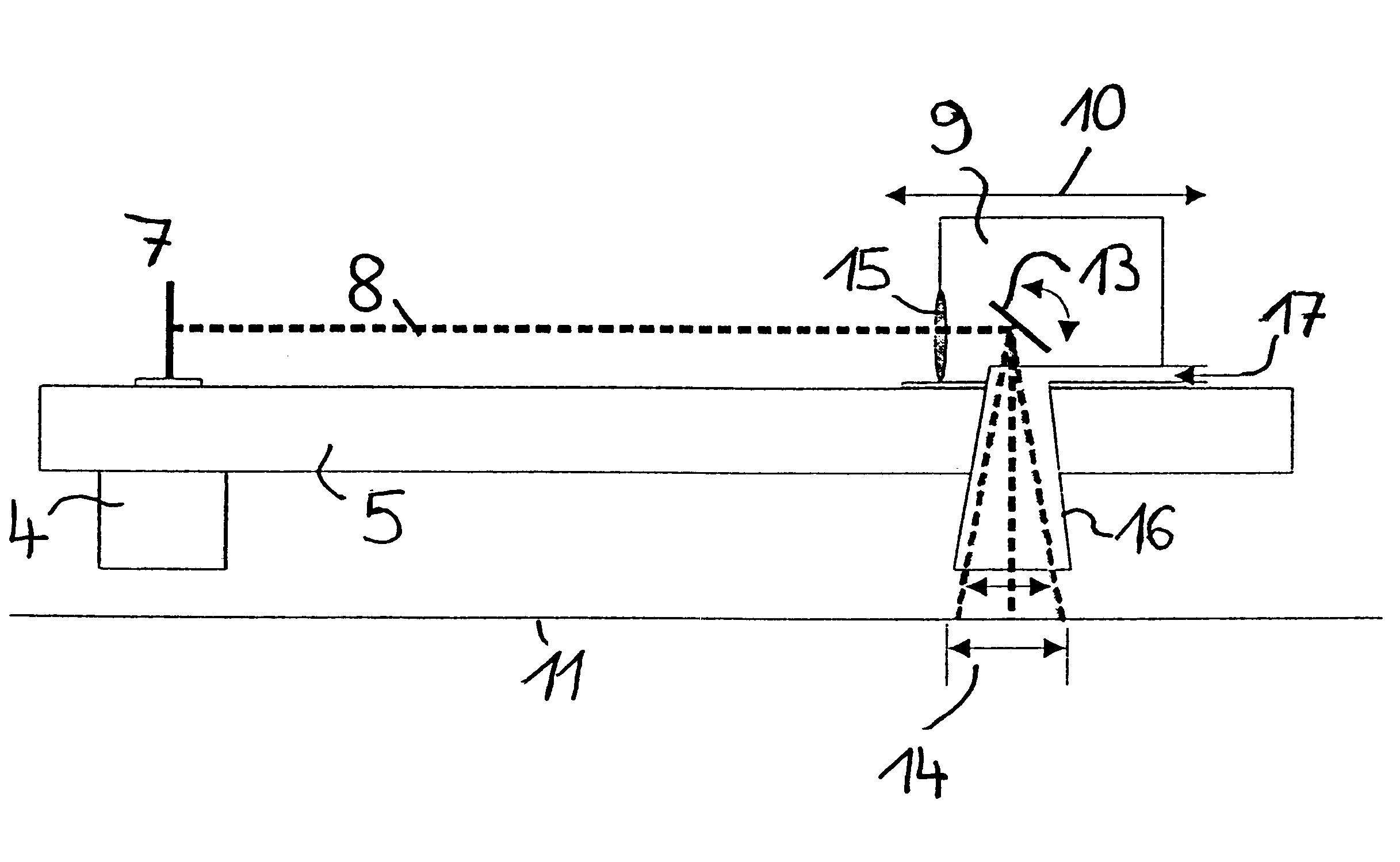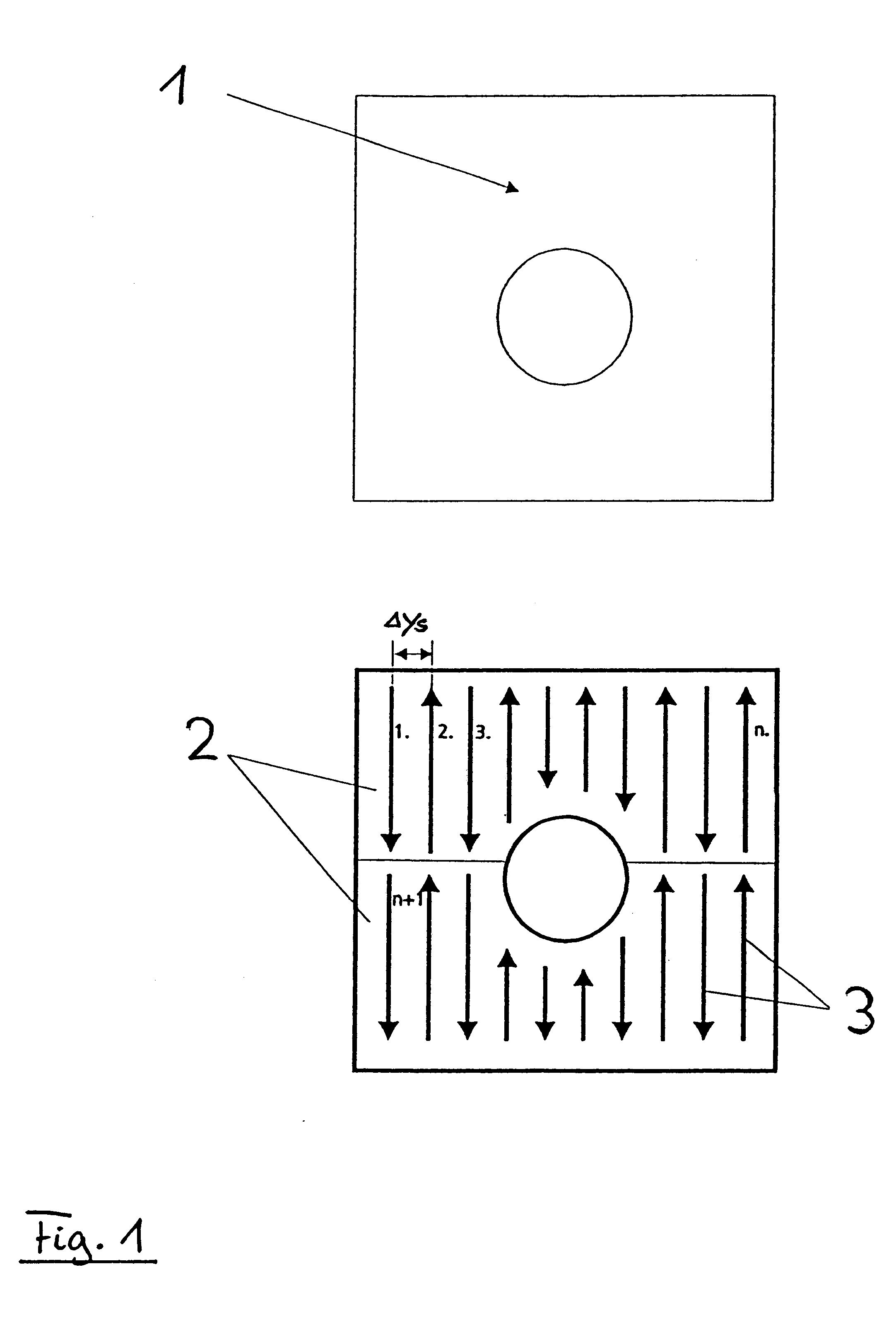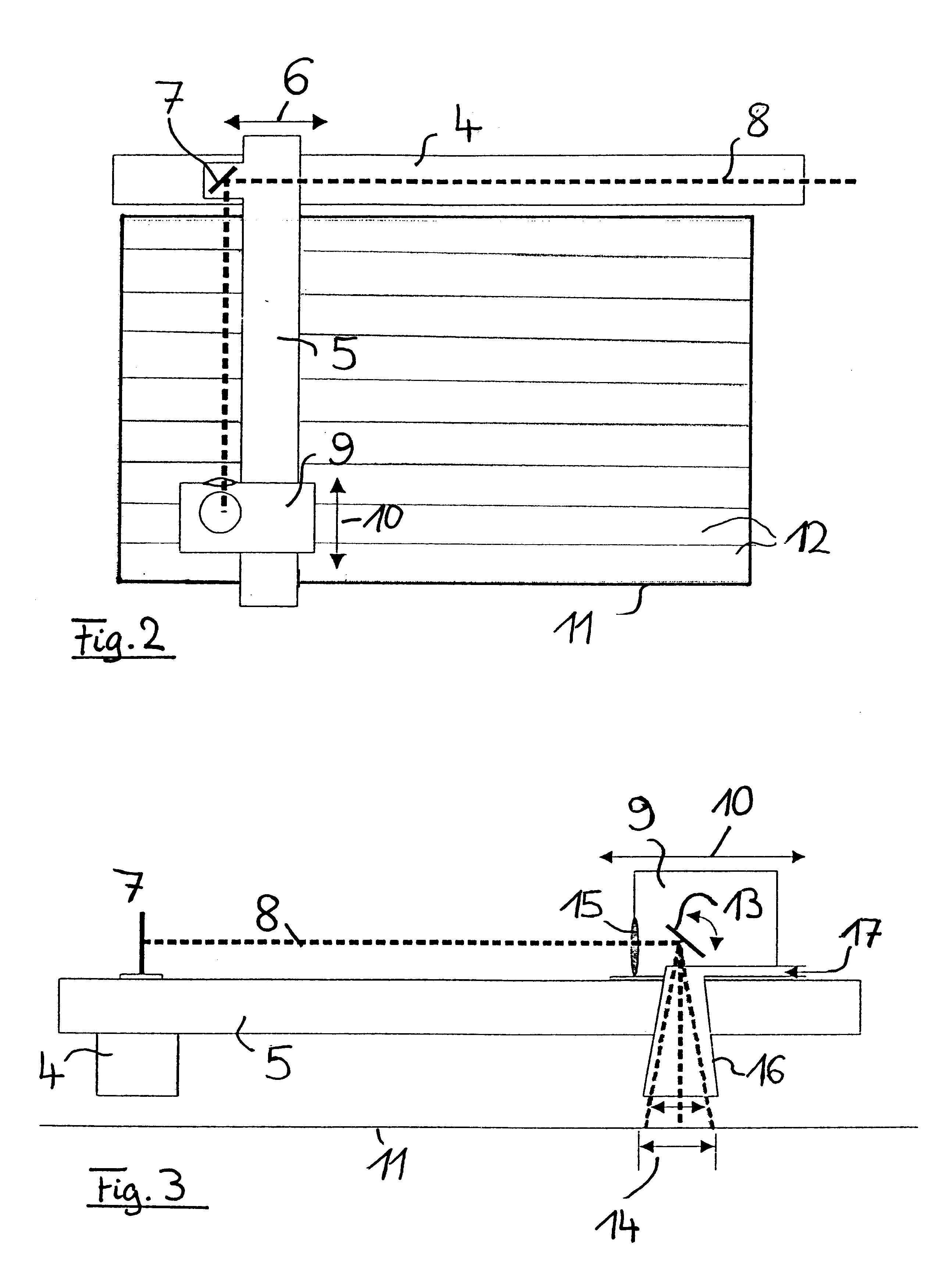Method and device for scanning the surface of an object with a laser beam
a laser beam and surface scanning technology, applied in the direction of optical elements, instruments, manufacturing tools, etc., can solve the problems of reducing the obtainable detail resolution and reducing the processing speed of the plotter system, and affecting the quality of the surface of the produced parts
- Summary
- Abstract
- Description
- Claims
- Application Information
AI Technical Summary
Benefits of technology
Problems solved by technology
Method used
Image
Examples
Embodiment Construction
The object of the present invention is solved with the device according to claim 1 and the process according to claim 10. Advantageous embodiments of this device and this process are the subject matter of the subclaims.
A key element of the present invention is that, in selective laser melting or laser sintering, when impinging on the processing area, the diameter of the laser beam is smaller than the width of the to-be-melted area respectively to-be-melted structure. Consequently, it is necessary to guide the laser on several adjacent paths to cover the entire to-be-melted area.
An element of the present invention is that it was understood that, by suited division of this area respectively of the laser paths on the area, two varyingly fast systems can be used to guide the laser beam. While the laser beam can be moved back and forth with high velocity to scan small subsections by means of a scanner optic, such as is known from the state of the art, the entire scanner optic is moved fu...
PUM
| Property | Measurement | Unit |
|---|---|---|
| Angle | aaaaa | aaaaa |
| Length | aaaaa | aaaaa |
| Angle | aaaaa | aaaaa |
Abstract
Description
Claims
Application Information
 Login to View More
Login to View More - R&D
- Intellectual Property
- Life Sciences
- Materials
- Tech Scout
- Unparalleled Data Quality
- Higher Quality Content
- 60% Fewer Hallucinations
Browse by: Latest US Patents, China's latest patents, Technical Efficacy Thesaurus, Application Domain, Technology Topic, Popular Technical Reports.
© 2025 PatSnap. All rights reserved.Legal|Privacy policy|Modern Slavery Act Transparency Statement|Sitemap|About US| Contact US: help@patsnap.com



